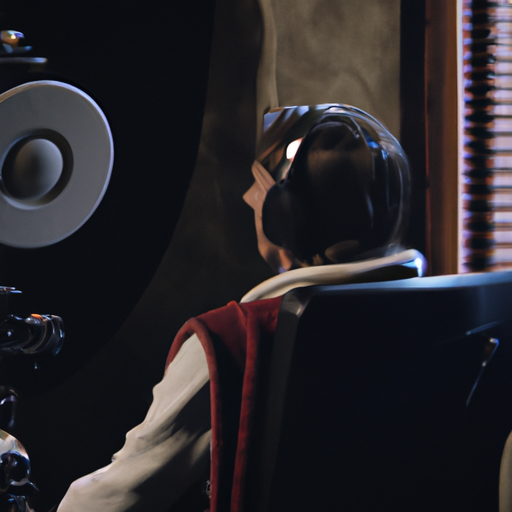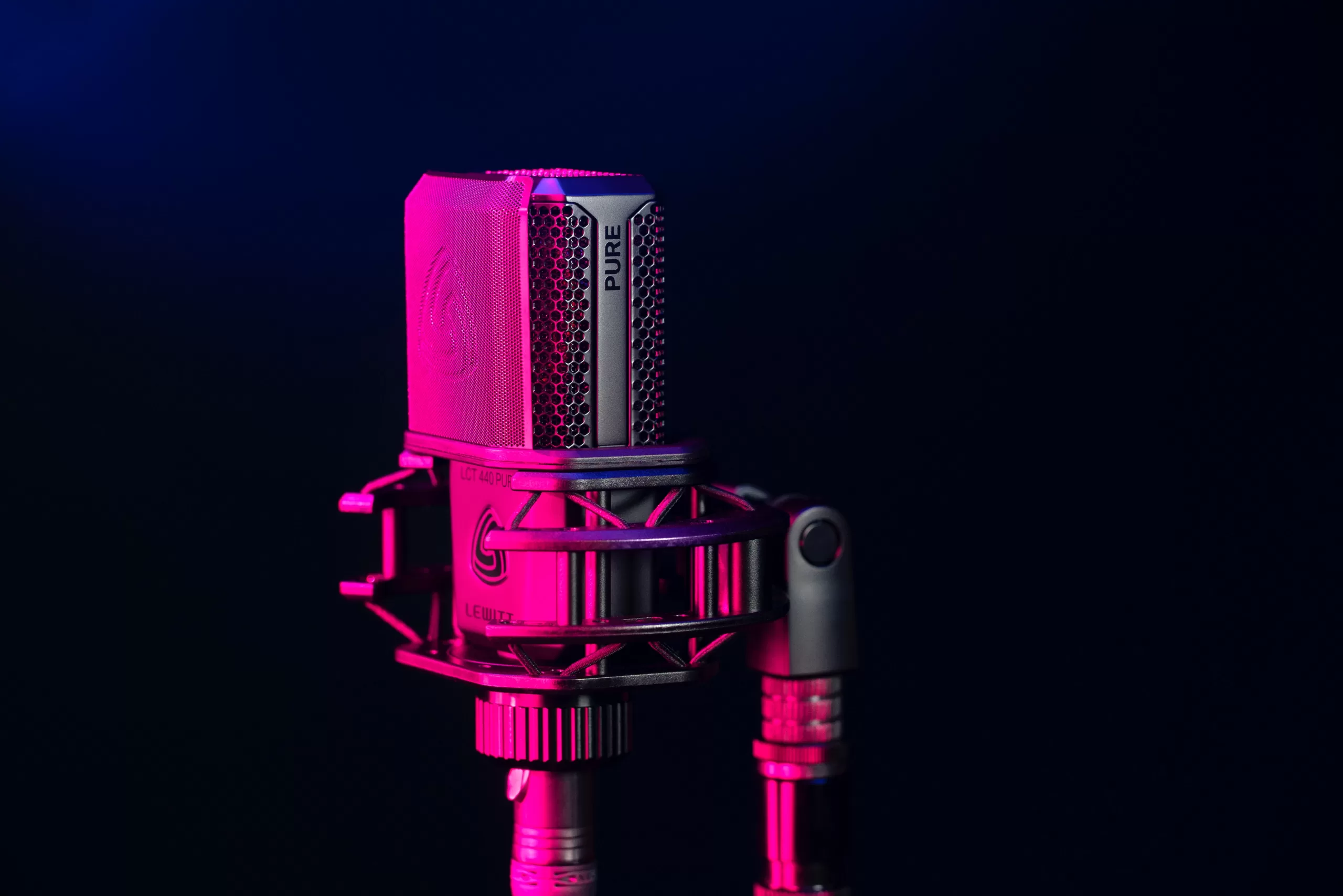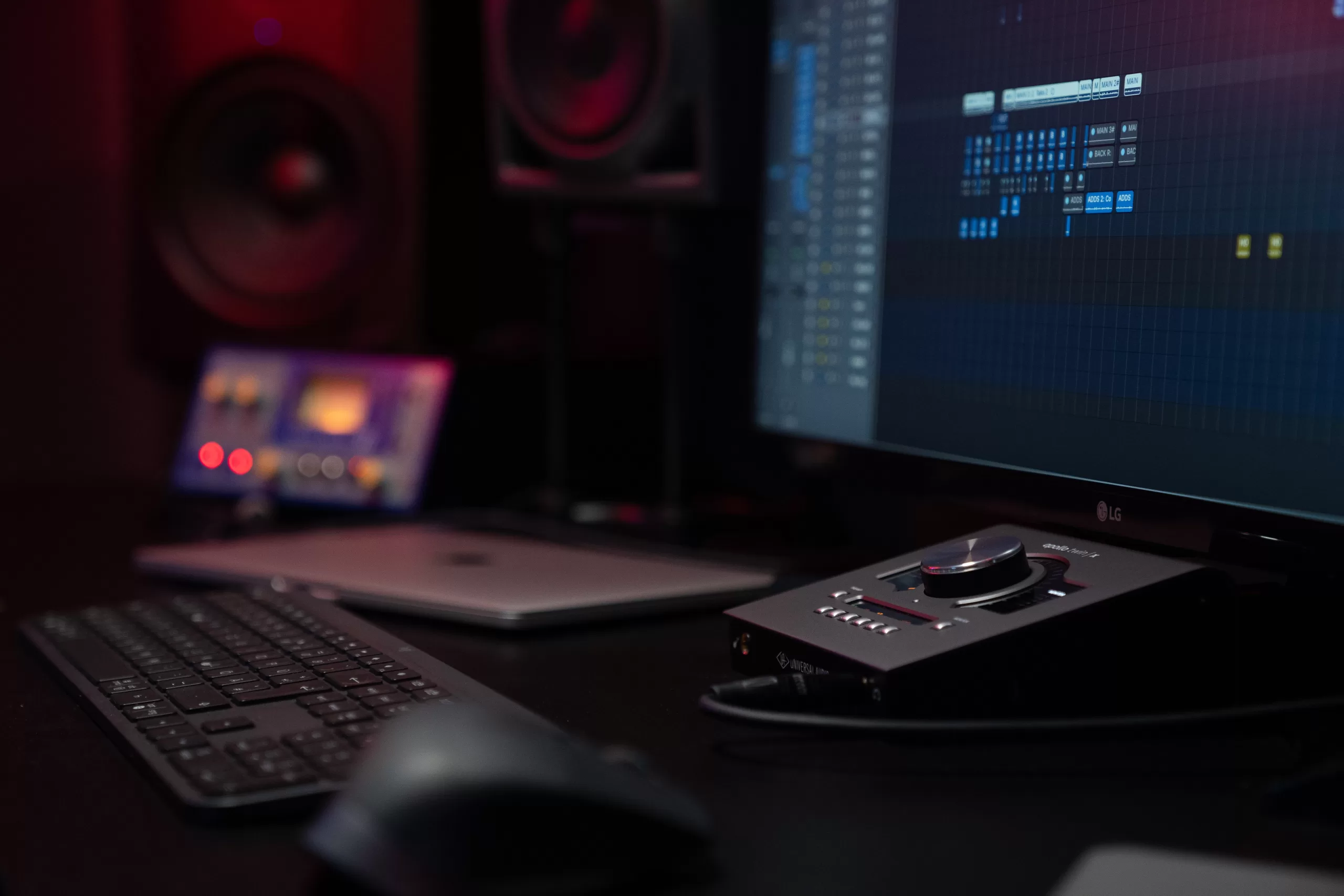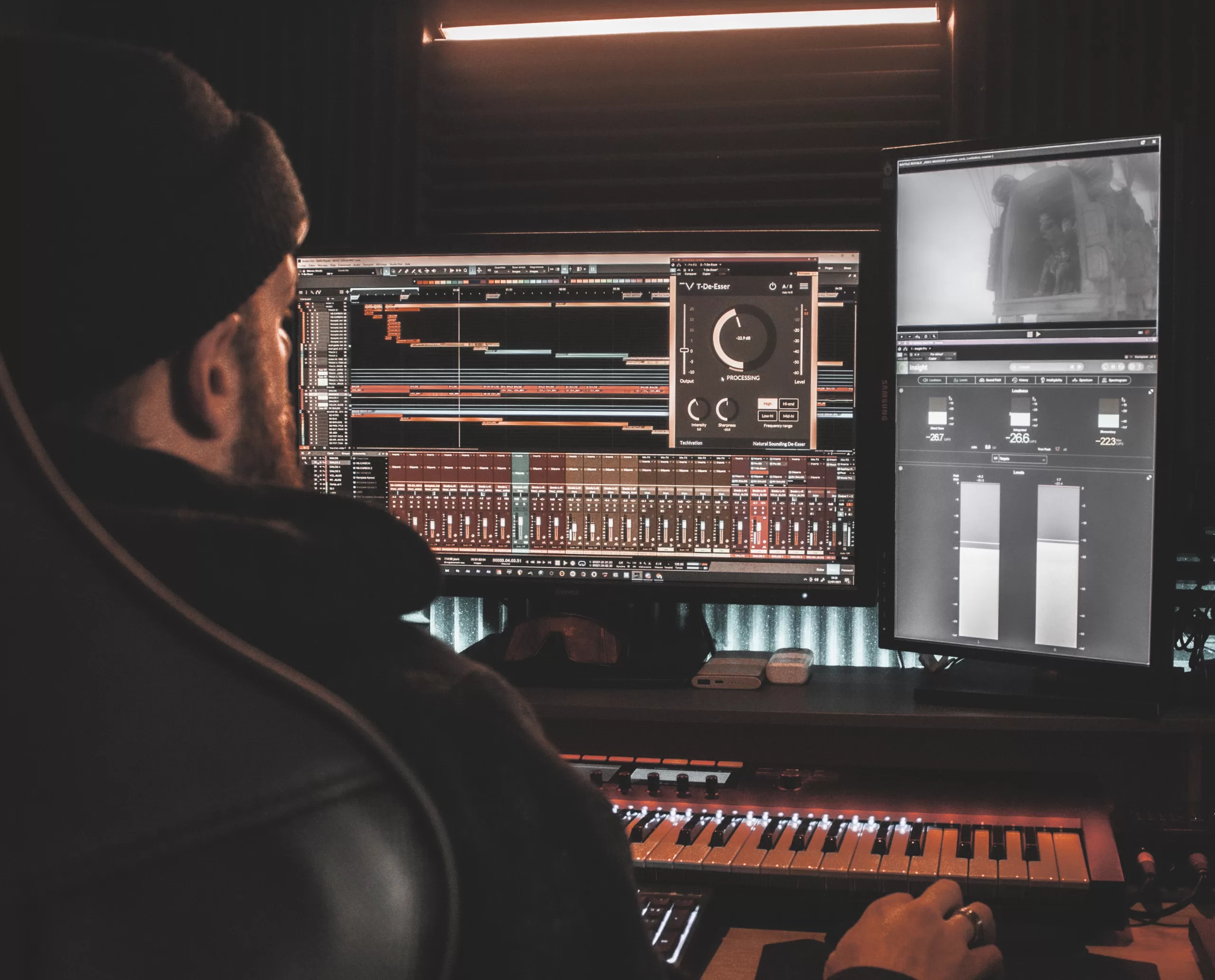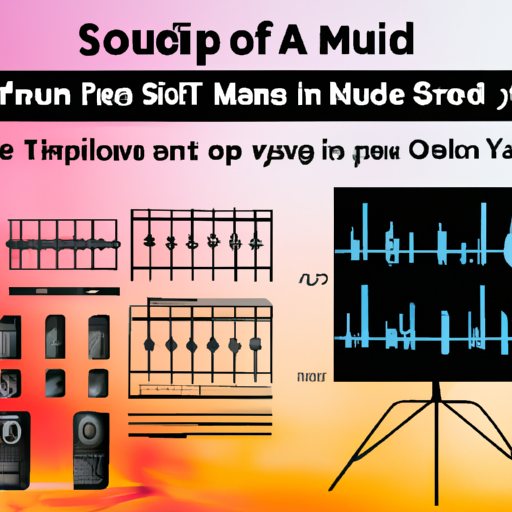
“Make Your Music Shine: Unlock the Power of Sound Design for Electronic Producers!”
Introduction
Are you an electronic music producer looking to make your music stand out? Sound design is a powerful tool that can help you create unique and interesting sounds that will make your music stand out from the crowd. In this article, we will explore some sound design techniques that you can use to make your music stand out. We will discuss the importance of sound design, the different types of sound design techniques, and how to use them to create unique and interesting sounds. By the end of this article, you will have a better understanding of how to make your music stand out with sound design.
Exploring the Basics of Sound Design for Electronic Music Producers
Sound design is an essential part of electronic music production. It involves the manipulation of sound to create unique sonic textures and effects. This article will explore the basics of sound design for electronic music producers, including the use of synthesis, sampling, and effects processing.
Synthesis is the process of creating sound from scratch using oscillators, filters, and other sound-generating components. Synthesizers can be used to create a wide range of sounds, from simple sine waves to complex textures and effects. Synthesis is a powerful tool for sound design, as it allows producers to create sounds that are unique and tailored to their needs.
Sampling is the process of recording and manipulating existing sounds. Sampling can be used to create new sounds by combining and manipulating existing audio material. It can also be used to create unique effects and textures. Sampling is a great way to add character and depth to a track, as it allows producers to incorporate sounds from a variety of sources.
Effects processing is the use of audio effects to manipulate sound. Effects can be used to shape and enhance sounds, as well as create unique sonic textures. Common effects used in sound design include reverb, delay, distortion, and compression. Effects can be used to create a wide range of sounds, from subtle enhancements to dramatic sonic transformations.
These are the basics of sound design for electronic music producers. By combining synthesis, sampling, and effects processing, producers can create unique and interesting sounds that will help to make their music stand out. With a little practice and experimentation, producers can develop their own sound design techniques and create unique sonic textures and effects.
Creative Ways to Use Synthesizers to Enhance Your Music
Synthesizers are powerful tools for creating unique and interesting sounds in music. They can be used to create a wide range of sounds, from classic analog tones to modern digital textures. By utilizing the various features of synthesizers, musicians can create unique and interesting sounds that can enhance their music. Here are some creative ways to use synthesizers to enhance your music.
1. Create Unique Textures: Synthesizers can be used to create unique textures and soundscapes. By combining different oscillators, filters, and effects, musicians can create complex and interesting sounds that can add depth and texture to their music.
2. Create Unique Melodies: Synthesizers can be used to create unique melodies. By utilizing the various features of synthesizers, musicians can create unique and interesting melodies that can add interest and emotion to their music.
3. Create Unique Rhythms: Synthesizers can be used to create unique rhythms. By utilizing the various features of synthesizers, musicians can create unique and interesting rhythms that can add energy and excitement to their music.
4. Create Unique Effects: Synthesizers can be used to create unique effects. By utilizing the various features of synthesizers, musicians can create unique and interesting effects that can add atmosphere and emotion to their music.
By utilizing the various features of synthesizers, musicians can create unique and interesting sounds that can enhance their music. By combining different oscillators, filters, and effects, musicians can create complex and interesting sounds that can add depth and texture to their music. They can also create unique melodies, rhythms, and effects that can add interest and emotion to their music. By utilizing the various features of synthesizers, musicians can create unique and interesting sounds that can enhance their music.
How to Create Unique Drum Sounds for Your Tracks
Creating unique drum sounds for your tracks can be a challenging task, but with the right techniques and tools, it can be done. Here are some tips to help you create unique drum sounds for your tracks.
1. Experiment with different drum samples. Drum samples are the foundation of any drum sound. Experimenting with different samples can help you create unique sounds. Try layering different samples together, or using samples from different genres to create something new.
2. Use effects. Effects such as reverb, delay, and distortion can help you create unique drum sounds. Try adding effects to individual drum samples or to the entire drum mix.
3. Use synthesis. Synthesis is a powerful tool for creating unique drum sounds. Try using a synthesizer to create your own drum sounds from scratch.
4. Use field recordings. Field recordings can be a great source of unique drum sounds. Try recording everyday sounds such as doors slamming, dishes clanking, or people talking and use them as drum samples.
5. Experiment with different mic techniques. Different mic techniques can help you create unique drum sounds. Try using different mic placements, such as close miking or room miking, to capture different sounds.
By following these tips, you can create unique drum sounds for your tracks. Experiment with different techniques and tools to find the sound that best fits your track.
Using Effects to Add Depth and Dimension to Your Music
The use of effects in music production can be a powerful tool for adding depth and dimension to a track. Effects can be used to create a wide range of sounds, from subtle nuances to dramatic changes in the overall sound. By understanding the different types of effects and how they can be used, producers can create unique and interesting sounds that will help to bring their music to life.
Reverb is one of the most commonly used effects in music production. Reverb is used to create a sense of space and depth in a track, and can be used to simulate different environments such as a concert hall or a small room. Reverb can also be used to create a sense of movement in a track, as it can be used to create a sense of motion and energy.
Delay is another popular effect used in music production. Delay is used to create a sense of space and depth in a track, and can be used to create a sense of movement and energy. Delay can also be used to create a sense of tension and suspense in a track, as it can be used to create a sense of anticipation and suspense.
EQ (equalization) is another important effect used in music production. EQ is used to shape the sound of a track, and can be used to create a wide range of sounds. EQ can be used to create a sense of clarity and definition in a track, as well as to create a sense of warmth and depth.
Compression is another important effect used in music production. Compression is used to control the dynamics of a track, and can be used to create a sense of power and energy in a track. Compression can also be used to create a sense of tension and suspense in a track, as it can be used to create a sense of anticipation and suspense.
These are just a few of the many effects that can be used to add depth and dimension to a track. By understanding the different types of effects and how they can be used, producers can create unique and interesting sounds that will help to bring their music to life.
Tips for Mixing and Mastering Your Music for Maximum Impact
1. Start with a Clean Slate: Before you begin mixing and mastering your music, make sure that you have a clean slate to work with. This means that you should start with a track that has been recorded and edited properly. This will ensure that you have a good foundation to work with and will help you avoid any unnecessary problems during the mixing and mastering process.
2. Use Reference Tracks: Reference tracks are recordings of other songs that have been professionally mixed and mastered. Listening to these tracks can help you get a better understanding of how your own music should sound. This will give you a better idea of what you should be aiming for when mixing and mastering your own music.
3. Use EQ to Balance the Frequency Spectrum: EQ is an important tool for mixing and mastering. It can be used to balance the frequency spectrum of your track, making sure that all the different elements of your track are heard clearly.
4. Use Compression to Control Dynamics: Compression is another important tool for mixing and mastering. It can be used to control the dynamics of your track, making sure that the loudest parts of your track don’t overpower the quieter parts.
5. Use Reverb to Create Space: Reverb is a great tool for creating a sense of space in your track. It can be used to make your track sound bigger and more expansive.
6. Use Limiting to Maximize Loudness: Limiting is a great tool for maximizing the loudness of your track. It can be used to make sure that your track is as loud as possible without clipping or distorting.
7. Listen to Your Track on Different Systems: It’s important to listen to your track on different systems to make sure that it sounds good on all of them. This will help you make sure that your track sounds good on all types of speakers and headphones.
8. Take Breaks: Mixing and mastering can be a long and tedious process. It’s important to take breaks throughout the process to make sure that you don’t get too fatigued. Taking breaks will also help you stay focused and make sure that you don’t miss any important details.
9. Get Feedback: Getting feedback from other people can be a great way to make sure that your track is sounding the way you want it to. Ask friends and family to listen to your track and give you their honest opinion. This will help you make sure that your track is sounding the way you want it to.
10. Have Fun: Mixing and mastering can be a long and tedious process, but it can also be a lot of fun. Don’t forget to have fun while you’re working on your track. Enjoy the process and make sure that you’re having a good time.
Creative Sampling Techniques for Electronic Music Producers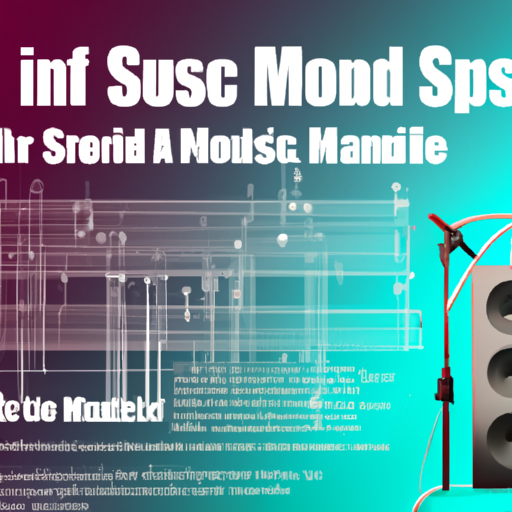
Electronic music producers often rely on sampling techniques to create unique and interesting sounds. Sampling is the process of taking a sound from one source and using it in a new context. This technique can be used to create a wide range of sounds, from subtle nuances to complex sonic textures. In this article, we will explore some creative sampling techniques that can be used to enhance the production of electronic music.
The first technique is to use a sample as a starting point for a new sound. This can be done by taking a sample and manipulating it with effects such as EQ, compression, and reverb. This can create a unique sound that is distinct from the original sample. Additionally, this technique can be used to create a new soundscape by layering multiple samples together.
Another creative sampling technique is to use a sample as a rhythmic element. This can be done by taking a sample and chopping it up into smaller pieces. These pieces can then be rearranged and manipulated to create a unique rhythm. This technique can be used to create complex and interesting rhythms that are not possible with traditional instruments.
The third technique is to use a sample as a melodic element. This can be done by taking a sample and transposing it to a different key or tempo. This can create a unique melodic line that is distinct from the original sample. Additionally, this technique can be used to create a new melody by layering multiple samples together.
Finally, the fourth technique is to use a sample as a sound design element. This can be done by taking a sample and manipulating it with effects such as distortion, delay, and filtering. This can create a unique soundscape that is distinct from the original sample. Additionally, this technique can be used to create a new soundscape by layering multiple samples together.
These are just a few of the creative sampling techniques that can be used to enhance the production of electronic music. By experimenting with these techniques, producers can create unique and interesting sounds that are not possible with traditional instruments.
Understanding the Role of EQ in Sound Design
Sound design is an essential part of the audio production process, and the use of equalization (EQ) is a key component of this process. EQ is a tool used to adjust the frequency balance of an audio signal, allowing sound engineers to shape the sound of a recording to their desired specifications. EQ can be used to enhance the clarity of a sound, reduce unwanted frequencies, or create a unique sonic signature.
The use of EQ in sound design is a complex process that requires a deep understanding of the frequency spectrum and how different frequencies interact with one another. EQ can be used to create a wide range of sonic textures, from subtle adjustments to dramatic changes. It is important to understand the role of EQ in sound design in order to create the desired sound.
The first step in using EQ in sound design is to identify the frequencies that need to be adjusted. This can be done by listening to the sound and identifying any frequencies that are too loud or too quiet. Once the frequencies have been identified, the engineer can then adjust the EQ settings to achieve the desired sound.
The next step is to adjust the EQ settings to achieve the desired sound. This can be done by adjusting the gain, frequency, and Q settings of the EQ. The gain setting adjusts the overall level of the signal, while the frequency setting adjusts the frequency range of the signal. The Q setting adjusts the width of the frequency range, allowing for more precise adjustments.
Finally, the engineer can use EQ to create a unique sonic signature. This can be done by adjusting the frequency and Q settings to create a unique sound. This can be used to create a signature sound for a particular artist or genre, or to create a unique sound for a particular project.
In conclusion, EQ is an essential tool in sound design, and understanding its role is essential for creating the desired sound. By understanding the frequency spectrum and how different frequencies interact with one another, sound engineers can use EQ to create a wide range of sonic textures. By adjusting the gain, frequency, and Q settings of the EQ, engineers can create a unique sonic signature for a particular artist or project.
Creative Uses of Reverb and Delay for Electronic Music Producers
Reverb and delay are two of the most commonly used effects in electronic music production. They are used to create a sense of space and depth in a mix, as well as to add texture and interest to a track. Reverb and delay can be used in a variety of creative ways to enhance the sound of a track and create unique sonic textures.
Reverb is an effect that simulates the natural reverberation of a room or space. It is used to create a sense of depth and space in a mix, as well as to add texture and interest to a track. Reverb can be used to create a wide range of sounds, from a subtle ambience to a dense, wet wash of sound. It can also be used to create a sense of movement in a track, as well as to add a sense of depth and atmosphere.
Delay is an effect that creates a repeating echo of a sound. It is used to create a sense of space and depth in a mix, as well as to add texture and interest to a track. Delay can be used to create a wide range of sounds, from a subtle ambience to a dense, wet wash of sound. It can also be used to create a sense of movement in a track, as well as to add a sense of depth and atmosphere.
Reverb and delay can be used in a variety of creative ways to enhance the sound of a track. For example, they can be used to create a sense of movement in a track by adding a repeating echo or reverb tail. They can also be used to create a sense of depth and atmosphere by adding a subtle ambience or a dense, wet wash of sound. Additionally, they can be used to add texture and interest to a track by creating unique sonic textures.
In conclusion, reverb and delay are two of the most commonly used effects in electronic music production. They are used to create a sense of space and depth in a mix, as well as to add texture and interest to a track. Reverb and delay can be used in a variety of creative ways to enhance the sound of a track and create unique sonic textures.
Exploring Creative Automation Techniques for Electronic Music Producers
The use of creative automation techniques in electronic music production has become increasingly popular in recent years. Automation is a powerful tool that allows producers to create dynamic and expressive music. It can be used to automate parameters such as volume, panning, and effects, as well as to create complex rhythmic patterns and melodic lines.
In this article, we will explore some of the creative automation techniques available to electronic music producers. We will discuss the benefits of automation, as well as the various methods of implementing it. We will also look at some of the creative possibilities that automation can offer.
The first benefit of automation is that it allows producers to create dynamic and expressive music. By automating parameters such as volume, panning, and effects, producers can create a wide range of sounds and textures. Automation can also be used to create complex rhythmic patterns and melodic lines. This can be especially useful for creating more interesting and unique sounds.
Another benefit of automation is that it can help producers to save time. By automating certain tasks, producers can focus on other aspects of their production. This can help to speed up the production process and allow producers to create more music in less time.
Finally, automation can also be used to create interesting and unique sounds. By automating parameters such as pitch, filter, and effects, producers can create sounds that would otherwise be difficult or impossible to achieve. This can be especially useful for creating more experimental and avant-garde sounds.
There are several methods of implementing automation in electronic music production. The most common method is to use a digital audio workstation (DAW) such as Ableton Live or Logic Pro. These programs allow producers to automate parameters such as volume, panning, and effects. Producers can also use hardware controllers such as MIDI keyboards or drum machines to automate parameters.
In conclusion, automation is a powerful tool that can be used to create dynamic and expressive music. It can also help producers to save time and create interesting and unique sounds. By exploring the various methods of implementing automation, producers can take their music production to the next level.
Creative Uses of Sidechain Compression for Electronic Music Producers
Sidechain compression is a powerful tool for electronic music producers, allowing them to create unique and creative sounds. By using sidechain compression, producers can create dynamic and interesting mixes that stand out from the crowd.
Sidechain compression works by using a signal from one track to control the dynamics of another track. This allows producers to create a wide range of effects, from subtle dynamic changes to extreme pumping and ducking.
One of the most common uses of sidechain compression is to create a pumping effect. This is done by using a kick drum or other rhythmic element to control the dynamics of a pad or lead sound. This creates a pumping effect that can add energy and excitement to a track.
Another creative use of sidechain compression is to create a ducking effect. This is done by using a vocal or other melodic element to control the dynamics of a pad or lead sound. This creates a ducking effect that can add depth and texture to a track.
Sidechain compression can also be used to create a rhythmic effect. This is done by using a rhythmic element to control the dynamics of a pad or lead sound. This creates a rhythmic effect that can add groove and movement to a track.
Finally, sidechain compression can be used to create a stuttering effect. This is done by using a rhythmic element to control the dynamics of a pad or lead sound. This creates a stuttering effect that can add tension and excitement to a track.
In conclusion, sidechain compression is a powerful tool for electronic music producers. By using sidechain compression, producers can create unique and creative sounds that stand out from the crowd. From pumping and ducking to rhythmic and stuttering effects, sidechain compression can be used to create a wide range of dynamic and interesting mixes.
Creative Uses of Layering for Electronic Music Producers
Layering is a powerful tool for electronic music producers, allowing them to create complex and interesting sounds. By combining multiple layers of sound, producers can create a unique sonic landscape that can be used to create a wide range of musical styles.
Layering can be used to create a variety of different sounds, from subtle textures to powerful rhythms. By combining different layers of sound, producers can create a unique sonic palette that can be used to create a wide range of musical styles.
One of the most common uses of layering is to create a thick, full sound. By combining multiple layers of sound, producers can create a dense, full sound that can be used to create a wide range of musical styles. This technique can be used to create a powerful rhythm section, or to create a lush, ambient soundscape.
Layering can also be used to create a wide range of effects. By combining different layers of sound, producers can create a wide range of effects, from reverb and delay to distortion and modulation. This technique can be used to create a wide range of sounds, from subtle textures to powerful rhythms.
Layering can also be used to create a wide range of textures. By combining different layers of sound, producers can create a wide range of textures, from smooth and mellow to harsh and abrasive. This technique can be used to create a wide range of sounds, from subtle textures to powerful rhythms.
Finally, layering can be used to create a wide range of musical styles. By combining different layers of sound, producers can create a wide range of musical styles, from ambient and chillout to techno and house. This technique can be used to create a wide range of sounds, from subtle textures to powerful rhythms.
In conclusion, layering is a powerful tool for electronic music producers, allowing them to create complex and interesting sounds. By combining multiple layers of sound, producers can create a unique sonic landscape that can be used to create a wide range of musical styles. Layering can be used to create a wide range of sounds, from subtle textures to powerful rhythms, as well as a wide range of effects and textures. Finally, layering can be used to create a wide range of musical styles, from ambient and chillout to techno and house.
Creative Uses of Stereo Imaging for Electronic Music Producers
Stereo imaging is an important tool for electronic music producers, allowing them to create a wide range of sonic textures and effects. By manipulating the stereo field, producers can create a sense of depth and space in their mixes, as well as create unique soundscapes and textures. In this article, we will explore some of the creative ways that producers can use stereo imaging to enhance their music.
One of the most common uses of stereo imaging is to create a sense of width and depth in a mix. By panning different elements of a track to different sides of the stereo field, producers can create a sense of space and depth in their mixes. This can be especially effective when used in conjunction with reverb and delay effects, as these can help to create a sense of space and atmosphere.
Another creative use of stereo imaging is to create unique soundscapes and textures. By panning different elements of a track to different sides of the stereo field, producers can create a wide range of sonic textures and effects. For example, by panning a lead synth to one side and a pad to the other, producers can create a unique soundscape that is both wide and immersive.
Finally, producers can use stereo imaging to create unique effects. By panning different elements of a track to different sides of the stereo field, producers can create a wide range of effects, such as phasing, flanging, and chorus. These effects can be used to create unique sounds and textures, as well as to add interest and movement to a track.
In conclusion, stereo imaging is an important tool for electronic music producers, allowing them to create a wide range of sonic textures and effects. By manipulating the stereo field, producers can create a sense of depth and space in their mixes, as well as create unique soundscapes and textures. Additionally, producers can use stereo imaging to create unique effects, such as phasing, flanging, and chorus. By utilizing these creative uses of stereo imaging, producers can create unique and immersive soundscapes that will captivate their listeners.
Conclusion
In conclusion, sound design techniques for electronic producers are essential for making your music stand out. By utilizing a variety of sound design techniques, such as layering, EQing, compression, and reverb, you can create unique and interesting sounds that will help your music stand out from the crowd. Additionally, experimenting with different sound design techniques can help you find new and creative ways to express yourself musically. With the right sound design techniques, you can create a unique and memorable sound that will make your music stand out.



